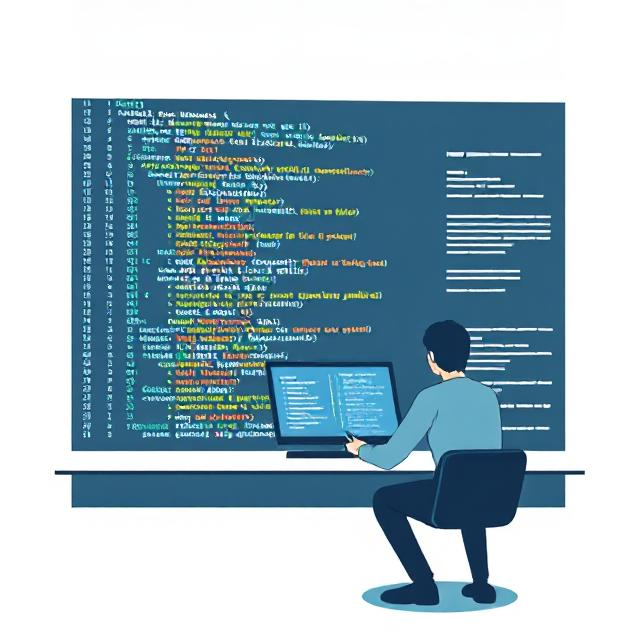When diving into the world of software development, one of the pivotal decisions you’ll face is choosing a programming paradigm that suits your project requirements and personal style—two of the most prominent paradigms being Object-Oriented Programming (OOP) and Procedural Programming (PP). While both approaches have their merits, the right choice often depends on the specific context of your project. In this article, we’ll explore the key characteristics, advantages, and limitations of both paradigms, helping you to determine which might be the best fit for you.
Understanding the Paradigms
Procedural Programming (PP)
Procedural programming is a programming paradigm based on the concept of procedures, or routines, which are collections of statements that perform a specific task. The key features of procedural programming include:
- Linear flow: Programs are structured as a sequence of procedures or functions that are executed in a specific order.
- Focus on functions: Emphasizes the use of procedures to manipulate data. Each function takes input, processes it, and may return output.
- State management: Data is often exposed; changes to state are made through globally accessible variables.
Languages associated with PP: C, Pascal, Fortran, and many scripting languages like Bash or PHP.
Object-Oriented Programming (OOP)
Object-oriented programming is a paradigm centered around the concept of objects, which are instances of classes that encapsulate both data and behavior. The main characteristics of OOP include:
- Encapsulation: Bundling the data (attributes) and methods (functions) that operate on the data into a single unit or class. This protects the data from unauthorized access and modification.
- Inheritance: The ability to create new classes based upon existing ones, promoting reusability and establishing a hierarchical relationship.
- Polymorphism: Allowing methods to do different things based on the object that it is acting upon, providing flexibility to the implementation of methods.
Languages associated with OOP: Java, C++, Python, Ruby, and C#.
Key Considerations for Choosing a Paradigm
- Project Size and Complexity
- Procedural Programming: Best suited for small to mid-sized projects with a straightforward flow and few moving parts. It can be simpler to implement and maintain when the requirements are clearly defined.
- Object-Oriented Programming: Ideal for large and complex applications where modularity, scalability, and maintenance are crucial. OOP enables developers to break down a system into manageable pieces (objects) that can interact with each other.
- Code Reusability and Maintenance
- PP: Supports code reuse through functions, but it may not offer the level of modularity found in OOP. Changes to the procedures may require refactoring many parts of the code base.
- OOP: Offers greater code reuse through inheritance and polymorphism. Once classes are defined, they can be reused or extended with minimal impact on existing code.
- Data Management
- PP: Data and functions are often treated separately, which can lead to more challenging debugging and maintenance down the line as state may be scattered.
- OOP: Encapsulation allows for better data management, as the state is protected within an object. This leads to a clearer structure and less reliance on external global states.
- Learning Curve
- PP: Generally simpler and easier for beginners to grasp due to its linear and straightforward logic.
- OOP: May require a deeper understanding of concepts such as classes, objects, inheritance, and polymorphism, which could be overwhelming for new developers.
When to Choose Each Paradigm
- Choose Procedural Programming when:
- Your project is simple or small in scale.
- You need to write scripts or automated tasks quickly.
- Performance is a primary concern and minimizing overhead is essential.
- Choose Object-Oriented Programming when:
- Your application is complex or requires scalability.
- You need to build a system that is maintainable and modifiable over time.
- A collaborative team will be developing the project, as OOP can help establish clear structure and responsibilities.
Conclusion
The choice between Object-Oriented Programming and Procedural Programming is not always black and white. Both paradigms have their strengths and weaknesses, and the best choice often depends on the project requirements, team skills, and future maintenance considerations. In practice, many developers use a combination of both approaches, leveraging the advantages of each paradigm where appropriate.
As you gain more experience in programming, you’ll better understand how to apply these paradigms to suit your specific needs. Remember that proficiency in multiple paradigms can make you a more versatile programmer, enhancing your capability to tackle a wide variety of projects.
Further Reading and Resources
- Books:
- “Clean Code: A Handbook of Agile Software Craftsmanship” by Robert C. Martin
- “Design Patterns: Elements of Reusable Object-Oriented Software” by Erich Gamma et al.
- “The Pragmatic Programmer: Your Journey To Mastery” by Andrew Hunt and David Thomas
- Online Courses:
- “CS50: Introduction to Computer Science” (Harvard University on edX) – Covers both paradigms.
- “Object-Oriented Programming with Java” (Coursera)
- “Learn C Programming” (Codecademy)
By using this guide, you can make an informed decision about which programming paradigm to use in your next project, ultimately helping you to write cleaner and more maintainable code.



Leave a Reply